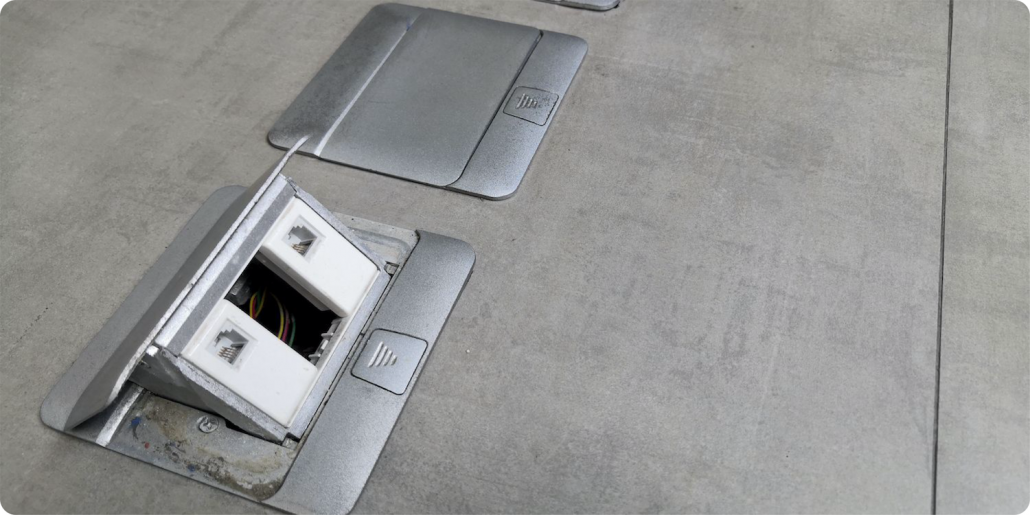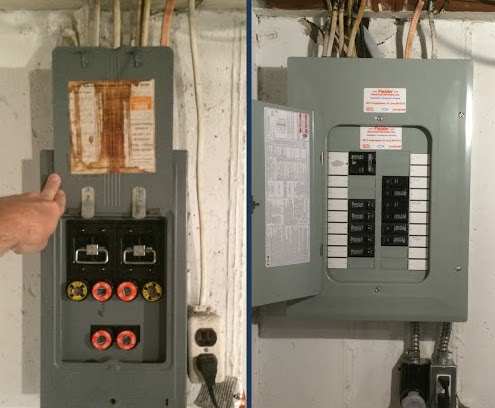July 24, 2020 | Cristina Dinulescu
For many homeowners, the thought of rewiring a house makes them skip a bit. It’s a big project, sometimes very complex depending on the house and the original wiring, and sometimes yes, rewiring a house can be messy. Of course, how messy it all gets depends on a few factors, the most important of which are your level of comfort with clutter and debris and how tidy your electrician is.
What Is Involved in Rewiring a House?
Popular belief has homeowners think that rewiring a house causes great disruption, but the truth is that today there are plenty of modern tools and techniques that limit the disruption considerably. To more accurately understand how things changed, it’s important to have a clear image as to what the requirements are. While every project is different depending on the needs of every homeowner and status of each house, these are usually the steps of the process and how they’ve changed:
- Lifting carpets and floorboards – you’ll read a lot on how electricians used to lift carpets, remove any linoleum, or lift floorboards in order to remove old electrical cables and run the new ones. However, a good electrician will do none of that today. Most of the work happens underneath the house, where the crawl space is, and there’s no need to lift carpets or floors. Even if the house doesn’t have a raised foundation and it’s built on a slab, then the electrician can run the wires through the attic, horizontally through the walls, all the way down to the receptacles.
- Chasing – this is the process through which some electricians will cut holes and channels into your walls to be able to run the cables and it’s the messiest step in rewiring a house. It’s also usually followed by replastering. However, there are ways to avoid this step and, again, the choice of electrician plays a huge role. Some companies don’t use chasing as a method, but rather fish wiring through the walls.
Can You Live In A House While It’s Being Rewired?
The short answer is YES. Of course, if you have just bought a house and the electrical survey noted that the property needs rewiring, then the best course of action would be not to move in until the rewiring is finished. This way, you won’t have to be present for any disruption or messiness, and also you don’t have to worry about your furniture being ruined or all your possessions getting dirty.
It’s also a good idea because, if you and your family are not actively living in the house, chances are the work will be carried out faster, as there will be no furniture or other items to move out of the way.
On the other hand, if you already live in the house that needs rewiring, it doesn’t mean you have to worry about finding new accommodation. Many people consider, or are being told that moving out would be the easier way. That’s not necessarily true. While going away for the duration will indeed mean you won’t have to see any mess, hear any noise, or deal with any of it, you can definitely live in your house for the duration.
The best electricians will cover all your furniture and lay drop cloths down where they’re working. They may also use specific tools that capture all the dust when drilling. In fact, new and more modern tools really do significantly limit the amount of dust created.
Additionally, you don’t have to lose power during the rewiring. Talk to your electrician about the process, but a good electrician should be able to leave electricity going into existing outlets. The new wiring can be run to a junction box under the house, and left very close to the openings. Then, when it’s all ready, the old wiring can be taken out and the new one connected.
Are There Alternatives to the Messy Rewiring?
Because rewiring a house is such a big and messy project, many homeowners wonder if there are quicker, less invasive alternatives. You’ll be able to determine this if you call for an electrical survey.
A thorough electrical inspection will tell you the status of your electrical panel and wiring, and the electrician should be able to recommend the ebay course of action and whether or not quick fixes can solve your problems. For instance, if the only discovery is faulty outlets, then fixing or replacing the outlets will be a faster, less expensive solution.
However, if your wiring is old or there are other, major signs of faulty wiring then remedial work is not the way to go. It will not ensure the electrical safety of your home. Rewiring, as daunting as it may be, might be inevitable when:
- The house hasn’t been rewired in 20 years or more – old homes usually have old wiring which in most cases is not safe or up to code anymore, and might need replacing.
- You’re remodeling – for major remodeling projects, such as conversion of rooms or expanding the house and adding extra rooms, electrical rewiring is required, as you need to make sure that new power demand is met by the electrical system safely.
- Increased convenience – sometimes the wiring of a house may be safe and functioning properly, but homeowners might want to add appliances, switches and outlets throughout the house for convenience. In order to accommodate that, rewiring may be required.
There’s also the option of part rewiring a house, although that’s not really an alternative, but more of a way to keep cost under control. It is possible to part rewire a house, but it is not generally advisable. You need to make sure that the extent of the project is documented and clearly defined, in order to be able to properly complete the work at the later time. In most cases, if you add it all up at the end, it will cost you more. Plus, you’ll have to deal with the messiness twice.







